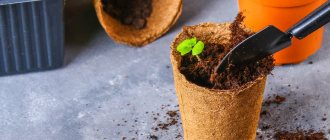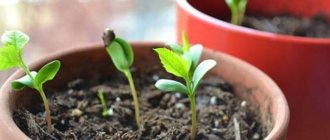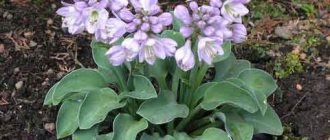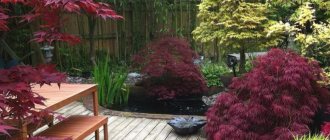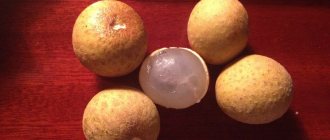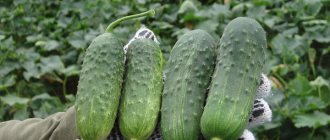- August 5, 2019
- Houseplants
- Michael Michaelis
Do you think it is impossible to grow a tangerine tree at home? No matter how it is! In our article you will learn a lot of useful information about growing tangerines from seeds at home, as well as about the rules for caring for a citrus plant. If you follow all the recommendations below, you will be able to acquire a crop that will not only please the eye, but also produce a rich harvest.
Which variety is best to use?
If you decide to grow tangerines at home using the seed as planting material, then we strongly recommend that you read the information in this section. After all, most lovers of indoor plants do not even suspect that not all varieties of citrus crops are equally well suited for growing at home. Below are just the main varieties that deserve your attention.
- Early ripening Shiva-Mikan. One of the most unpretentious varieties, which is ideal for growing at home. A distinctive feature of the variety is its strong-smelling fruits.
- Room Murcott. It will delight its owner with some of the sweetest honey fruits. Unlike the previous variety, it requires much more care (watering should be especially high-quality).
- Early ripening Unshiu. One of the most productive varieties. The tree is small in size but has abundant foliage. It will delight a person not only with its delicious fruits, but also with its decorative appearance.
- Popular Clementine. One of the wild species of tangerine, which will bloom only if the owner constantly grafts it. But tangerine is one of the most unpretentious to care for.
If you start planting some other variety, you only risk wasting precious time and effort on a futile activity. You may be able to grow a tree. However, it is not a fact that it will actively bloom and bear fruit. In addition, many owners of indoor plants complain that tangerines from their own grown trees are simply impossible to eat. The reason for “inedibility” may lie in an incorrectly selected variety or poor care.
How to order flowers for delivery?
Growing tangerines at home from seeds Each of us eats at least some imported fruits and vegetables every week. Some of them simply do not grow here in a certain season, and some are completely absent due to unsuitable climate.
But almost everyone at least once in their life has thought about how great it would be to have an exotic tree in their garden on which tangerines, lemons, persimmons or pomegranates would grow . It's not as impossible as you might think. Most exotic plants can be grown at home, in a greenhouse or even outside . To do this, you just need to provide the plant with proper care and grow it correctly .
Growing tangerines at home from seeds
Quite a popular home tree. Caring for it is not as difficult as many of you think. Mandarin is easy to care for and is a fairly resilient plant . Such a tree can be grown either from a seedling or from an ordinary seed , which you can find in a ripe fruit. If you are going to buy a seedling, it is worth noting that there are both fruit-bearing and decorative tangerines. But, if you are not looking for easy ways and decide to grow your tree from scratch, then you will have to work hard.
The first and most important thing to do is take a few seeds . Why several? The fact is that not every seed can germinate and to germinate only one is a lost cause, since you are unlikely to be lucky the first time . After you have chosen the seeds you like, you need to start germinating them. To do this, you need to take a small piece of fabric, place gauze there and moisten it all. It is important not to add too much water, keep your cloth and gauze damp but not too wet. Next, you need to put the bones on the gauze and cover them with a cloth on top.
After the future tangerine hatches, it needs to be planted in the ground. You will most likely have to collect the soil yourself; it consists of turf soil, sand, rotted cow dung, and leaf soil. At the bottom of the pot it is necessary to make drainage from stones or expanded clay.
The first three weeks after planting are the active period of tangerine growth. Therefore, for the first two weeks it is better to feed your tree with mineral or organic fertilizer. You can also buy special fertilizer for citrus trees. You will need to replant once a year, trying as much as possible not to damage the roots. When the tangerine is eight years old, replanting can be reduced.
Since this tree lives in warm countries, it loves the sun and warmth. In winter, the temperature should not fall below 14 degrees. Daily moistening is also necessary, and in summer watering several times a day, in winter only after the soil dries out. To keep the fruits sweet from April to September, you need to actively feed the tree. But the fruits depend not only on this. After four years of life, the first fruits usually appear on the tangerine, but they are sour because they are wild. To get sweet and tasty tangerines, you will have to graft from an already fruiting tangerine.
Growing pomegranate at home
This tree is quite unpretentious and looks very unusual in a pot, which is why many people want to grow it at home . And this is quite possible. It is enough to have pomegranate seeds with you, which can be obtained from the fruit purchased in the store. The pit must be freed from pulp, then rinsed in cold water, wiped well and dried for 24 hours. This will let the seeds know that they are ready to grow.
Growing pomegranate at home
To do this, you need to prepare the soil in advance, which will include peat, soil and sand. After this, the soil needs to be moistened and the seed placed at a depth of 1 cm; it is important to maintain the distance between the seeds that you plant. The pot should be covered with polyethylene and placed in a sunny, warm place to create all the necessary conditions for growth. Usually the first shoots appear within a couple of weeks and sprout quite quickly. From the sprouted sprouts, you need to select the most viable ones and continue to grow them.
It is advisable to plant each selected sprout in a separate pot. The main thing in growing pomegranate is that it has enough light throughout the day . It does not require abundant watering, once a week in summer, once a month in winter, as the soil dries out. During the period of flowering and active growth, that is, in spring and summer, the tree needs to be fed monthly. Pomegranates can begin to bear fruit in the third or fifth year of life.
Growing banana at home
Growing a banana at home
banana seeds from a purchased fruit, so you will either have to buy them or buy a ready-made seedling. The shell of banana seeds is quite thick, so it is better to help the seed break through it. To do this, it is enough to pierce it with a needle, but very little, without touching the seed itself, so as not to damage it. Each seed must be planted in a separate small pot with soil, which consists of four parts river sand and one part peat.
The seeds need to be placed on already moistened soil and slightly pressed into it. Next, the pot is covered with polyethylene. The pot should be placed in a sunny place, but so that it is not exposed to direct sunlight. You will also need to ventilate it once a week and periodically spray it so that the soil does not dry out. But it is also important not to over-moisten the substrate. Seeds take a very long time to germinate, from a month to three months.
Banana is not particularly demanding to care for , the main thing for its growth is a large amount of light (but indirect sunlight), abundant watering and frequent spraying, because bananas often grow in tropical forests. In addition, it is important that the air temperature does not fall below 20 degrees.
After three years, when a large number of leaves (from twelve) appear on the tree, the tree may begin to bloom and even bear fruit. The fruits may not be very tasty, but quite tolerable, as for a home tree.
Growing kiwi at home
Growing this tree in your own pot is quite simple. Kiwi is not particularly demanding to care for and will grow well on your windowsill if there is no draft. To grow kiwi from seeds, you need to find a ripe, soft fruit at your local grocery store.
Growing kiwi at home
After you have chosen a fruit, you should remove several dozen seeds from it and rinse them with cold water to remove the pulp so that during germination there are no bacteria on the seeds and they do not become moldy in the future. You can rinse using either a sieve or gauze. Then the already peeled seeds should be placed in a glass filled with water at room temperature and placed on a warm windowsill, preferably above the radiator.
After about seven days, the seeds will begin to hatch; if this does not happen within this period, the water must be replaced with fresh water. If this happens, the seeds will need a greenhouse. “Build” is very easy. To do this you will need damp gauze or cloth, a glass or a jar. Seeds that have hatched should be placed on a damp cloth or gauze and covered tightly with a glass. Under the influence of such a greenhouse, the seeds will quickly sprout the first sprouts after two to three days.
Sprouted seeds need to be placed in the ground. It is better to take a separate pot for each seed or pair of seeds. And you can either buy the soil or lay it yourself; it consists of peat, sand and black soil. The seeds should be placed on the prepared soil and sprinkled with a little soil. Then moisten it daily with a spray bottle or simply cover the pot with polyethylene or cover it tightly with glass to create a greenhouse. As your kiwi grows, it should be kept constantly moist and warm. The soil should not be allowed to dry out, and it is also necessary to constantly moisten the plant by spraying it. In addition, the tree needs to be provided with constant light throughout the day.
Growing figs at home
The fig tree is also quite unpretentious in care and cultivation . You can buy it either as a ready-made seedling or grow it from the seeds of a fruit you bought in a store. In general, in its homeland the plant lives in a warm climate, so it is not possible to grow it outside due to the lack of warm winters.
Growing figs at home
The seeds can be obtained from both fresh and dried figs . After the seeds are removed, they must be thoroughly washed and placed in warm water for two to three days. This is necessary in order to select viable seeds. During this period, seeds that are not able to germinate will float, while viable ones will settle to the bottom, due to the weight gained due to absorbed moisture.
After this, the seeds will need to be germinated using the traditional method using moistened gauze or cloth. If you do not want to germinate the seeds for a long time, you can do this directly in the soil. To do this, place the seeds in moistened sand and lightly sprinkle them, then cover them with polyethylene or glass to create a mini greenhouse. Future plants should be germinated in coarse-grained wet sand, since other soil will have a detrimental effect on the future tree and will not provide the necessary nutrients
After the seeds germinate, they can be replanted in soil, which consists of a mixture of regular flower soil and sand. A growing plant needs to be watered and sprayed frequently to help it grow faster. The pot with the fig tree should be placed in a shaded place so that it is not exposed to direct sunlight.
In the third to fifth year of life, the fig tree can bear its first fruits.
Growing mangoes at home
A fruit that many of us have only seen on TV or smelled only in food or hygiene products, mangoes can easily be grown at home with just one fruit. But even if your tree does not bear fruit, you can enjoy its wonderful flowering, as it is extremely beautiful and fragrant. But, it is worth considering that mango is a rather massive tree and therefore it will need an appropriate pot and space.
Growing mangoes at home
After you have chosen a ripe fruit from which you will grow your tree, you must carefully remove the seed. After this, it must be thoroughly washed to remove any pulp so that it does not remain anywhere. After this, you can begin germination.
To do this, you need to take a small glass or shot glass, fill it with warm water and place ¾ of the seeds in it. This is quite difficult to do, since the seed is unlikely to want to stand vertically, so you will have to be smart. This structure should be placed in a warm and sunny place. The seed will germinate within fourteen days and up to a month. The plant will then sprout one or more shoots, which are separate plants. By the way, before germination, the seed needs to be dried for several days.
After you notice the sprouts, they need to be removed from the shell under which they are hidden. This must be done as carefully as possible so as not to damage anything. Then you can start planting. Each sprouted seed must be grown in a separate pot with soil, which consists of turf soil for ordinary indoor plants.
Young mangoes love moisture , but water should not stagnate in the pot. Like most tropical plants, mango loves light and warmth.
But, if there is one minus in growing in a pot . Your tree is unlikely to ever bloom or bear fruit. The fact is that mangoes have a very large root system and therefore there simply won’t be enough space for them in an ordinary pot and they won’t be able to develop normally. But even the mango tree itself, without fruits, looks very beautiful and unusual, so it can be planted as a living decoration.
But don't be upset . Any plant can be purchased already adapted for growing in cramped conditions. But for this you will need to contact the nursery. Such a tree will be quite expensive, but it will be quite capable of blooming and bearing fruit.
The same can be said about other trees. Each of them grows in a warm climate , so they need certain conditions for existence and normal functioning . But botanists have long ago solved this problem by creating special hybrids or dwarf species that feel great in apartment conditions and are able to bear fruit. But it is worth knowing that trees grown from seeds are much stronger and more powerful than hybrid seedlings and look more impressive.
Excellent(2)Bad(0)
Proper seed preparation
If you decide to germinate a tangerine seed at home, you will need to first perform several important procedures. The germination rate of tangerine seeds leaves much to be desired, so most professional gardeners recommend first soaking the seeds in plain water so that they swell properly. This increases the likelihood of pecking.
The best option for this procedure is to use a regular gauze cloth. We simply place the fabric on the table and place several tangerine seeds in it. Close the bag and spray it with a spray bottle. It is important to constantly maintain a moist environment so that the seeds hatch as quickly as possible. But it is highly not recommended to dry the seed before planting!
Also, any gardener can purchase hydrogel in a specialized store and use it to grow indoor tangerines from seeds. Simply mix the composition with water, according to the instructions, and then place an orange seed into the swollen hydrogel. Try to place the seed strictly in the center, since there is much less water near the edges. The percentage of seed germination when using hydrogel will be increased several times.
Cherry
To bear fruit, cherry trees must go through a period of stratification. To do this, place the dried seeds in an airtight plastic container and store in the refrigerator for 10 weeks. When the seed is ready, plant it taking into account the following recommendations:
- Cherry trees need plenty of sunlight and good air circulation.
- This type of plant needs fertile and sandy soil with excellent drainage.
- Keep the soil slightly moist and water it when it becomes dry.
You will have to wait 7 to 10 years to taste your homegrown cherries.
What kind of soil will you need?
How to plant a tangerine from a seed? You will need to use a quality substrate as citrus crops are very picky about this matter. It would be best to purchase a ready-made mixture at a specialty store. However, a more budget-friendly option is to prepare the soil yourself. To do this, you need to mix 2 parts of leaf soil, 1 part of sand, and also add a little ash and humus.
It is immediately worth noting that when using soil from the forest, it must be properly treated against pests. Even if you do not notice mites or aphids in the soil, this does not mean that they did not have time to lay their eggs there. For processing, it is best to use boiling water and pour it thoroughly into the container with the substrate. After this, all that remains is to wait for it to dry and distribute the soil into containers to plant the sprouted seeds in them.
Plums
To grow a plum tree, you will need some special ingredients. First, place the plum pits on the windowsill for a few days to dry. You need to get the inner soft seed. After that, put it in a glass of water, leaving it there for one night. Then take a pot of nutrient substrate. Place the seeds inside and cover the pot. Place the container in the refrigerator for 1.5-2 months until roots appear.
Rare shot: Viktoria Isakova showed her grown-up daughter from Yuri Moroz (new photo)
If there is little snow, there will be no harvest: December 16 is Ivan the Silent Day
Smooth and fresh skin: dermaplaning, or why a woman needs to shave her face
Plant the seedlings in a potting mixture containing 2 parts soil and one part compost or mineral fertilizer.
Plum trees need at least 6 hours of direct sunlight per day. During the germination period, keep the soil slightly moist, but not too soggy. The plum should begin to bear fruit in 3-5 years.
Seed planting procedure
Have you ever wondered what will grow from a tangerine seed? If not, then it's time to find out by doing a little experiment at home. It’s easy to guess that the procedure for planting citrus seeds is practically no different from other plants. It will be enough to make a small depression in the soil (about 1.5 centimeters), then place the sprouted seed there and sprinkle it with soil.
However, if you want to increase the percentage of seed germination, it is strongly recommended to cover the container with planting material with a plastic bag, thereby forming a small greenhouse. Just don’t forget to regularly ventilate the seedlings and remove excess condensation, which will certainly accumulate on the surface. Otherwise, cold water will lead to the development of serious diseases.
Avocado
Before planting avocado seeds, you must prepare the sprout and then plant it. Take 4 toothpicks and pierce the bone with them on 4 sides. Place it over a glass of water. The liquid should cover about 2.5 centimeters of the pit. Place the glass in a warm place. But at the same time, it is important to provide shading so that direct sunlight does not fall on the bone. The root will appear within approximately 2-6 weeks.
“We are still friends”: Derevianko commented on the breakup with his wife
It’s good to wash often: myths about shampoo and hair care that only harm
A Brazilian travels 36 km by bike every day to take his loved one home.
When planting, make sure the seeds are partially exposed to air. The best time to plant avocados is from March to June. Trees grow best in moderate humidity and should be watered 2-3 times a week.
The first harvest can be harvested after 5-13 years. This time is enough for the tree to mature enough and begin to bear fruit. Don't worry about a lot of flowers falling off. This is normal for the plant presented.
What to do with the first shoots?
When answering the question about how to grow tangerines from seeds at home, one cannot fail to note the fact that the timing of germination can be different (it all depends on the variety and conditions of detention). In some cases, the first shoots appear within two weeks, and sometimes you have to wait a month or a month and a half. We only recommend that you maintain the optimal soil temperature all this time, which ranges from 18 to 20 degrees for most varieties.
As soon as the first shoots appear, it is necessary to remove the greenhouse and place the containers in a sunny area. The best place would be a window sill with an east or west orientation. If you decide to place the tangerine in the southern room, then be sure to create an additional source of shading so that the light is diffused. By the way, in some cases two plants grow from one seed at once, so you can pick them without any problems.
Rules for caring for small tangerines
Growing a fruit-bearing tangerine from a seed is not an easy task even for a professional gardener. However, this does not mean that you cannot do it if you put in the proper effort. The most important thing is to follow the optimal recommendations for caring for citrus fruits.
- Watering. It is highly recommended to prepare the water in advance before pouring it into the substrate. The irrigation liquid should not contain harmful chemical elements, so it should be left for about a day.
- Spraying. Mandarin, like most citrus crops, has an extremely positive attitude towards humid air. Therefore, do not forget to use a spray bottle or steam generator from time to time.
- Lighting. In the summer, there should be no problems with this issue. But in winter you may need an additional light source. It is best to use fluorescent lamps for this.
- Transfer. This procedure must be carried out every year. If the root system does not feel comfortable, then it will not be possible to achieve flowering.
- Fertilizers. Mandarin does not need additional feeding, but during the flowering period this procedure must be carried out without fail so that the flowers form into fruits.
And these are just the basic rules that must be followed in any case. More detailed care depends on the chosen variety, as well as what exactly the grower wants to get from the plant. For example, if it is important for you to get a lush crown, you will have to regularly trim old branches.
How to germinate an apricot kernel
Inside each fruit there is a hard drupe with a kernel. In order for a seed to germinate, stratification is necessary - prolonged exposure to certain temperatures. Fresh seeds show the best germination. Cooked apricot pits from compote will never sprout.
If the tree is planned to be planted in open ground in the future, then the choice of planting material must be taken responsibly. For planting, choose seeds from sweet apricots, taste not only the pulp, but also the kernel.
Before planting, taste not only the pulp, but also the apricot kernel, which should not be bitter
Sweet apricots also have a sweet kernel - the fruits of a tree grown from such a seed will most likely also be tasty.
Soak the seeds in water and remove any that float. Dry seeds need to be soaked for about three days, making sure to change the water every day. In this case, it is advisable to use rain, melt or spring water.
Is it necessary to germinate the seed before planting?
To ensure guaranteed apricot shoots, it is advisable to germinate the seed until the root appears. To do this, stratification is carried out in a cool place - a refrigerator or cellar:
- The soaked bones are sprinkled with washed river sand, vermiculite or sawdust. Then moisten and place in a container or bag.
- The container is left in a cool place, for example, in the refrigerator, and kept there at a temperature of +2 °C.
- Usually after 90–100 days the roots begin to hatch.
Be sure to check the seeds during the stratification period so that they do not dry out or become moldy due to excess moisture.
For the best germination of apricot seeds, it is necessary to stratify them before planting
If you need to speed up stratification, then the container is periodically placed in the freezer for several hours, then transferred to a shelf for storing fruit, where the temperature is +6...+10 °C. So the seeds are kept until planting in the ground or pots.
It is much easier to observe the seeds placed in damp cloths and a plastic container.
Video: stratification of seeds in tissue and their planting
When can we expect the first fruiting?
Many people wonder how long a tangerine grows from a seed before it begins to bear fruit. However, the answer to this will directly depend on the quality of care for the crop and the variety that was planted. However, it is immediately worth noting that you will have to wait quite a long time for the first fruits. In most cases, the first flowering appears at 3-4 years, but fruits from the buds begin to form only at 4-5 years.
Although you can resort to a procedure called grafting to speed up the flowering process by almost half. To do this, you will have to germinate another tangerine, using a seed of the same variety as before. Care for the tree until the size of the main stem reaches the thickness of a pencil. After this, it is necessary to cut off as many young shoots as possible and graft them onto the old tree.
For the procedure to be successful, a small incision in the shape of the letter “T” must be made at the base. Of course, for this you will have to use a very sharp object, for example, a scalpel or a special garden blade. We place the shoot between other young branches of the same size and fix it in any convenient way. You can achieve flowering of tangerine from seed without grafting by regularly spraying the crop with the preparation “Zdraven”.
Pear
To ensure good seed germination, it is best to first use the greenhouse method. Place the seeds in a plastic bag filled with damp moss. It should be stored on the bottom shelf of the refrigerator for 2-3 months. After this, place the seeds in a glass of water for 2 days. Then you can plant them following the recommendations of experts:
- Pear trees need well-drained soil and at least 6 hours of daylight. Remember that the more light a plant receives, the more moisture it will require.
- Water the pear tree at least once a week. It is best to do this in the morning or afternoon.
It will take a minimum of 3 years and a maximum of 10 years for your tree to begin bearing fruit. Harvest the pears when they begin to change color while they are still firm. Once harvested, the fruits will ripen.
"Dad is offended." Agata Muceniece about her relationship with Priluchny after the divorce
Women's jeans: before you buy them, you need to pay attention to one detail
Lost weight: what Sofia Tarasova sacrificed for the sake of “VIA Gra” (new photos)
What diseases are dangerous for the plant?
In order for a tangerine on a windowsill from a seed to begin to bear fruit, it will first need to be grown into an adult tree, which may not be so easy, given the risk of developing various diseases. And although the plant has fairly good immunity, it can still be susceptible to one or another disease. In most cases, this occurs due to the fact that a person does not properly care for the crop.
- Root rot. This fungal infection in most cases develops due to improper watering. If excess moisture is retained in the pot all the time, then sooner or later the roots of the plant will become diseased and the tangerine will die. To prevent this from happening, it is necessary to monitor the condition of the substrate, and also use a drainage layer in the pot. Broken brick or expanded clay are best suited for this purpose.
- Powdery mildew. This bacterial disease most often occurs due to high air humidity combined with low temperatures. Although the tangerine loves a subtropical microclimate, do not forget that the room should always be warm. Otherwise, gray spots will begin to form on the leaves, which can only be gotten rid of with the help of a proven fungicide.
- Gray rot. Another leaf disease that occurs due to too dry indoor air. As a rule, the development of bacterial infection occurs in the winter season, when the heating season begins. That is why experienced gardeners do not recommend placing a tangerine tree near radiators and radiators. Trimming leaves and treating the plant with fungicides will help cope with the scourge.
Remember that the effectiveness of the treatment procedure directly depends on how quickly it was started. For example, it is common among gardeners to believe that root rot is an incurable disease. However, if a grower notices that his tangerine is growing somehow incorrectly, he can prevent death. All you need to do is cut off the damaged roots and transplant the tree into a new substrate.
Growing apricots from seeds directly in open ground
There is another way to grow apricots - without seedlings, when the seed is planted directly in open ground. As a rule, it is most convenient to do this in the fall, at the end of October-beginning of November, when frosts begin.
Seeds are harvested in the summer and stored in the refrigerator, and with the arrival of the season, planting begins.
Choosing a landing site
A place for further growth of young trees must be chosen that is illuminated, preferably with diffused light. This will protect the seedlings from scorching rays. It is also necessary to ensure that there are no drafts: a place that is too drafty will not promote the growth of fragile trees. In the natural environment, young shoots are in the shade of mature trees. This must be taken into account when disembarking.
It is better to avoid the proximity of apricots to apple trees, pears, plums, cherries and walnuts, since, firstly, they produce dense growth that can quickly drown out young plantings. And secondly, they are powerful carriers of pests and diseases, and apricots are extremely sensitive to them. The same applies to proximity to raspberries and currants. Therefore, it is better to plant apricots only with apricots.
Which parasites are the most dangerous?
A florist who decides to grow tangerines from seeds at home should be aware of pests, whose activities can have a detrimental effect on the health of the green crop. Yes, you heard right. Dangerous insects can appear even in the house. In most cases, this happens when using untreated soil from the forest or after bringing a new flower into the room with a tangerine that has not undergone sanitary treatment.
- Spider mite. The most common and one of the most dangerous parasites that affects not only vegetables, but also home crops. Due to the activity of small spiders, the tangerine grows extremely slowly or even dies if mites develop a whole colony on it. You can cope with the scourge using mechanical treatment of leaves (if there are a small number of pests), a soap solution or a powerful insecticide.
- Shield. Another well-known pest, which in appearance is very similar to a convex oval-shaped plate. The main sign of the presence of a parasite on a plant is a viscous coating that it secretes during its life. If all insects are not destroyed in time, then sooner or later the plant will die. Mandarin processing is carried out using a solution of green soap (20 grams per 1 liter).
- Aphid. Despite the fact that this pest most prefers to settle on vegetable crops, it still does not disdain to suck the juices from a citrus plant. The main problem is that aphids reproduce quite quickly, so if insects are detected, you should not delay treatment. It is best to immediately apply a biological-based insecticide or make a tobacco tincture (40 grams of dry plant per 1 liter of water).
Planting in a pot
The process of transplanting a plum seed into a flower pot is almost identical to sowing any other plant. Not too coarse drainage is placed in an even layer at the bottom of the pot. Next, the pre-prepared substrate is poured. It needs to be watered well. The water should be warm and the soil should be well moistened.
The plum seed is planted in the middle of the pot to a depth of no more than 5-6 cm. Upon completion of planting, the flower pot is hermetically wrapped in a plastic bag and placed in a warm place. If there is good sunny weather, the pot can be placed on the window.
“Greenhouse” conditions allow the sprout to germinate already 3-6 days after planting. All these days, it is recommended, if necessary, to moisten the soil and remove condensation drops from the surface of the plastic bag.


